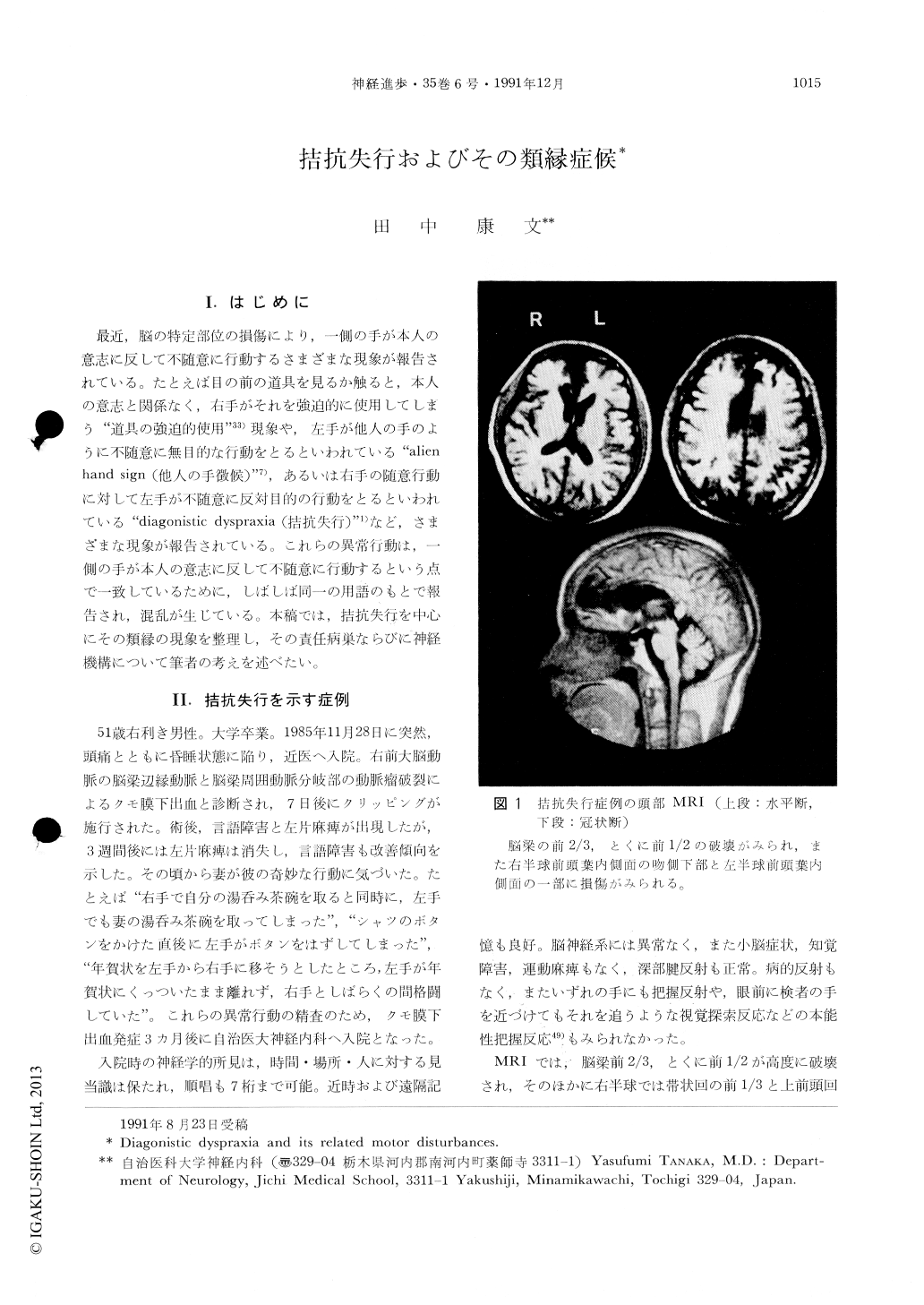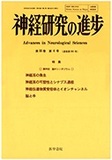Japanese
English
- 有料閲覧
- Abstract 文献概要
- 1ページ目 Look Inside
I.はじめに
最近,脳の特定部位の損傷により,一側の手が本人の意志に反して不随意に行動するさまざまな現象が報告されている。たとえば目の前の道具を見るか触ると,本人の意志と関係なく,右手がそれを強迫的に使用してしまう“道具の強迫的使用”33)現象や,左手が他人の手のように不随意に無目的な行動をとるといわれている“alien hand sign(他人の手徴候)”7),あるいは右手の随意行動に対して左手が不随意に反対目的の行動をとるといわれている“diagonistic dyspraxia(拮抗失行)”1)など,さまざまな現象が報告されている。これらの異常行動は,一側の手が本人の意志に反して不随意に行動するという点で一致しているために,しばしば同一の用語のもとで報告され,混乱が生じている。本稿では,拮抗失行を中心にその類縁の現象を整理し,その責任病巣ならびに神経機構について筆者の考えを述べたい。
In recent years, several types of abnormal behaviour of one hand, which were dissociated from conscious volition, have been described in brain-damaged patients. According to their characteristic features, these abnormal behaviours have been classified into three major types: diagonistic dyspraxia, alien hand sign or syndrome, and compulsive manipulation of tools. There are, however, some confusion about the use of these terms, especially between the former two, since they are not fully defined. In this article, I attempt to characterize the dissociative motor disturbance of each type and discuss possible responsible lesions.

Copyright © 1991, Igaku-Shoin Ltd. All rights reserved.


